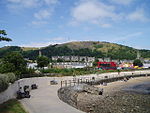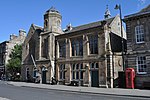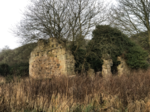Burntisland Parish Church

Burntisland Parish Church (also known as St Columba's, Burntisland) is a church building in the Fife burgh of Burntisland, constructed for the Church of Scotland in 1592. It is historically important as one of the first churches built in Scotland after the Reformation, with a highly distinctive and apparently original square plan. It is Category A listed for its architectural and historical importance.In 1601 the church was the location of a meeting of the General Assembly of the Church of Scotland which proposed to King James VI of Scotland that they work on a new Bible translation. When James became King James I of England he was able to devote resources to the production of what would ultimately become the King James Version.
Excerpt from the Wikipedia article Burntisland Parish Church (License: CC BY-SA 3.0, Authors, Images).Burntisland Parish Church
East Leven Street,
Geographical coordinates (GPS) Address Nearby Places Show on map
Geographical coordinates (GPS)
| Latitude | Longitude |
|---|---|
| N 56.05804 ° | E -3.23243 ° |
Address
St Columba's Parish Churchyard
East Leven Street
KY3 9DX
Scotland, United Kingdom
Open on Google Maps









